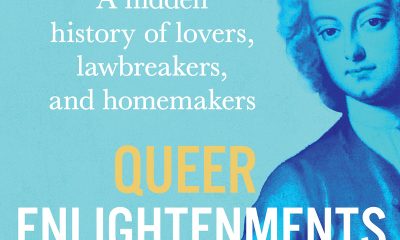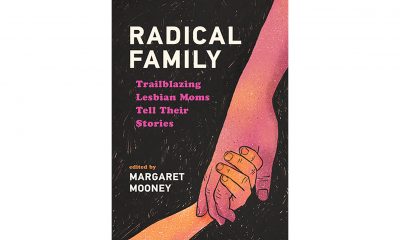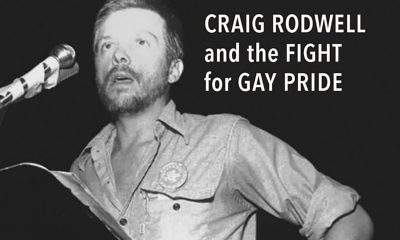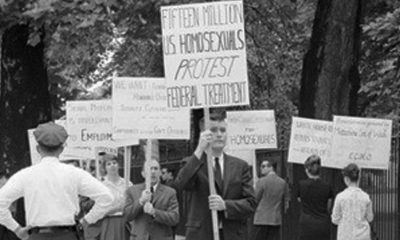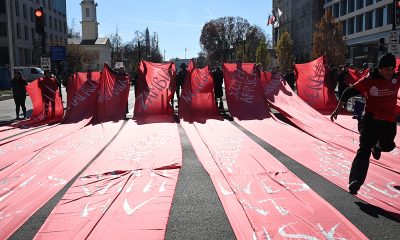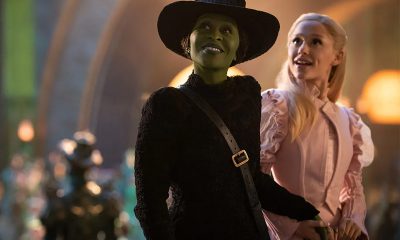Books
Best books to give as gifts this holiday season
History, activism, biographies — and Cher!
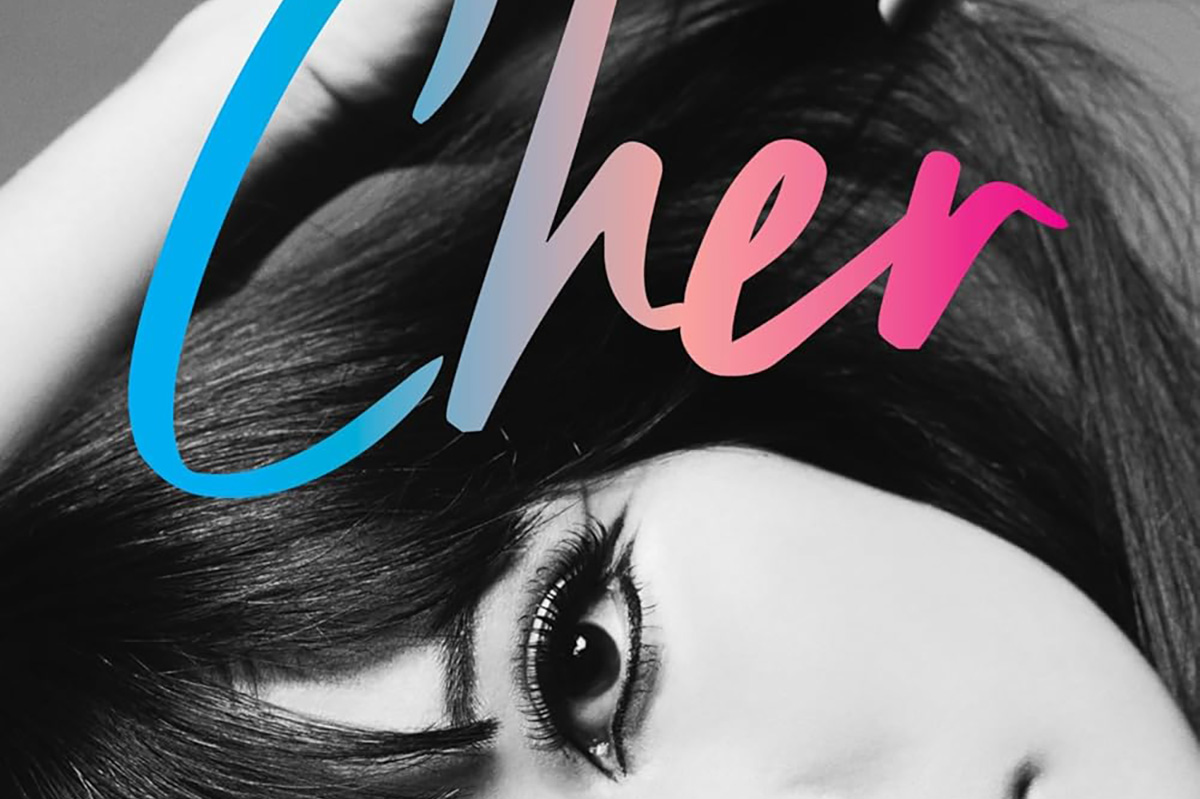
So you looked at the calendar the other day and — eeeek!
The holidays are almost here and you’re not ready. Out of ideas for gifts? How about a book?
Is there an activist for justice on your gift list? Then they’ll be happy to open “Morningside: The 1979 Greensboro Massacre and the Struggle for an American City’s Soul” by Aran Shetterly (Amistad, $28.99), It’s a story of the Klan, white supremacy, racial conflict, and how it fits in with what’s going on in America today. Pair it with “Sidney Poitier: The Great Speeches of an Icon Who Moved Us Forward” complied by Joanna Poitier, edited by John Malahy (Running Press, $29). Bonus: This inspiring book is packed with photos.
Fiction for the LGBTQ Reader
If there’s someone on your gift list who’d enjoy a coming-of-age story, “Shae” by Mesha Maren (Algonquin Books, $28.00) is a good choice to give. It’s a boy-meets-girl tale, but when a pregnancy happens, it spurs bigger changes in their lives than just parenthood.
If a fun little rom-com is what your giftee loves to read, then look for “We Could Be Heroes” by Philip Ellis (Putnam, $20). It’s a light tale of a chance encounter and a friendship that starts out small and becomes pretty super. You might want to wrap it up with “Love and Hot Chicken” by Mary Liza Hartong (Wm. Morrow, $30), a sweet, funny story of two Tennessee women, a chicken shack, and amour.
If your giftee loves rom-coms, there are a bunch to choose from this season. Consider “The Ride of Her Life” by Jennifer Dugan (Avon, $17.99), a girl-meets-girl novel of a new ranch-owning horsey-girl and the farrier who disagrees with her ranching ideas.
Nonfiction for the LGBTQ Reader
The person on your gift list who loves memoirs will devour “Cactus Country” by Zoe Bossiere (Abrams Press, $27.00), the story of an 11-year-old and a new start in which everyone sees him as the boy he is. But life as a trans boy isn’t easy in the beautiful area he’s come to embrace, and neither are the people who surround him. Wrap it up with “The Long Hallway” by Richard Scott Larson (University of Wisconsin Press, $21.95), a memoir of a boy who identifies with a movie monster who helps him see that hiding parts of himself can help him come to terms with who he is.
For the trans man or woman on your gift list, look for “The Last Time I Wore a Dress” by Dylan Scholinski and Jane Meredith Adams (Penguin Publishing), a story of abuse, bullying, mental anguish, and a happy ending. This book was first published more than 25 years ago but now has a new, satisfying and joyful ending. Wrap it up with “Mama: A Queer Black Woman’s Story of a Family Lost and Found” by Nikkya Hargrove, the tale of a love, responsibility, and more love.
If your giftee is exploring their sexuality, “Fierce Desires: A New History of Sex and Sexuality in America” by Rebecca L. Davis (Norton, $35) might be a welcome gift. Have we come a long way, in understanding people’s sexuality? Yes and no – your giftee may have ideas about that.
Biography
Did your giftee spend a childhood immersed in books about growing up? If so, they’ll cherish those memories when they read “The Genius of Judy” by Rachelle Bergstein (One Signal Publishers, $28.99). This biography fills readers in on who Judy Blume was, why she wrote the novels she penned, and how her stories fit in with today’s adolescence, feminism, current events, and literature. Wrap it up with this great biography: “Rulebreaker: The Life and Times of Barbara Walters” by Susan Page (Simon & Schuster $30). It’s the story of Walters, her times, and her impressive works.
If your giftee is riled by this year’s politics and feminism, then they’ll love reading “A Well-Trained Wife” by Tia Levings (St. Martin’s Press, $30). It’s the story of Levings’s life as a wife in a Christian patriarchy-based marriage, the submissiveness, the expectations, and her ultimate resistance. The right kind of giftee will love this book completely.
The British history lover on your list will absolutely want “The Eagle and the Hart: The Tragedy of Richard II and Henry IV” by Helen Castor (Avid Reader Press, $35). This book takes a deep dive into history, the lives of two cousins, and a shocking assumption to the throne. Pair it with a bookmark and “Henry V: The Astonishing Triumph of England’s Greatest Warrior King” by Dan Jones (Viking, $35), a book about the life and times of this English king in the fifteenth century.
For the person on your gift list who loves music, “How Women Made Music: A Revolutionary History from NPR Music” edited by Alison Fensterstock (HarperOne, $40) is exactly the right gift. It’s a look at female musicians from the 1920s to more recent years, from country music to hip hop to guitar players and beyond. Wrap it up with “I Heard There Was a Secret Chord: Music as Medicine” by Daniel J. Levitin (Norton, $32.50), a book about music and how it contributes to healing and well-being.
“Friendly Fire: A Fractured Memoir” by Paul Rousseau (Harper Horizon, $29.99) may be the exact right gift for anyone who loves a unique memoir. Just before he graduated from college, Rousseau was shot in the head accidentally. How he survived, both physically and in the friendship with the man who shot him is the basis of this very well-done book.
The science-minded person on your gift list will be happy to have “The Elements of Marie Curie: How the Glow of Radium Lit a Path for Women in Science” by Dava Sobel (Atlantic Monthly Press, $30). Chances are, your giftee knows exactly who Madame Curie was, but do they know about the women who came after her in the laboratory. This book tells the tale in an engaging, interesting way.
For your fashionista who loves make-up, “Becoming Elizabeth Arden: The Woman Behind the Global Beauty Empire” by Stacy A. Cordery (Viking, $35) could be the best gift beneath the tree this year. It’s a sweeping story of a businesswoman, glamour maven, revolutionary, visionary, her work, her times, and the controversy she lit.
And don’t forget queer icon Cher’s new book, “Cher, The Memoir Part One,” filled with no-nonsense anecdotes about her rocky rise to fame. Fellow queer icon RuPaul also published his biography earlier this year, “The House of Hidden Meanings: A Memoir.”
Politics
Was your giftee dismayed at the political landscape for the past few years? Then “Good Reasonable People” by Keith Payne (Viking, $29.00) should be the book you wrap up to give. There is a way back to unity and away from polarization, Payne says, and with an explanation of the psychology and behind it, it’s do-able.
Be sure you know where your giftee’s politics lie if you wrap up “The MAGA Diaries” by Tina Nguyen (One Signal Publishers, $28.00). Nguyen cut her teeth in the conservative movement, though she never felt entirely comfortable there. Eventually, she needed to get out; how she did it is a story the right giftee will love.
The person on your list who’s mourning the end of the political season, will be happy to get “The Handy Civics Answer Book: How to Be a Good Citizen” by David L. Hudson, Jr. J.D. (Visible Ink Press, $29.99). It’s a large, heavy book about our American documents, the Amendments they should know about, what it means to be a “good citizen,” and more.
Remember the Reagan years? For your giftee that does, too, “Dear Mom and Dad” by Patti Davis (Liveright, $27.99) will be a great gift to unwrap. Davis, of course, was the Reagans’ daughter, and this love letter to family and country is perfectly appropriate this year.
Here’s a political issue your activist will want to know more about: “The Stolen Wealth of Slavery: A Case for Reparations” by David Montero (Legacy Lit, $29). Part history, part business, part eye-opener, this book is one of the better looks at this controversial subject.
Season’s readings!
Books
Pioneering gay journalist takes on Trump 2.0 in new book
Nick Benton’s essays appeared in Fall Church News-Press
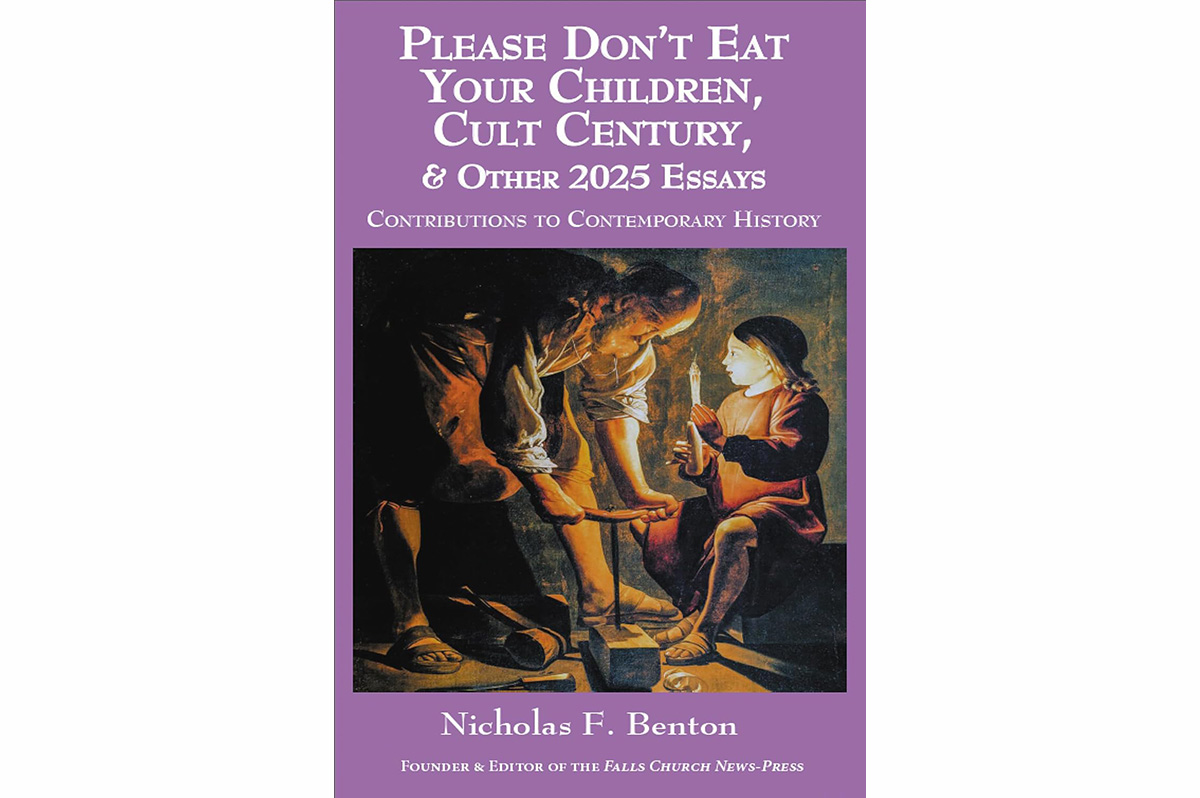
Nicholas Benton is a well-known local LGBTQ advocate and journalist and the longtime owner and editor of the Falls Church News-Press, a weekly newspaper.
In his eighth book out now, Benton offers a new set of remarkable essays all crafted in the first eight months of Trump 2.0 and its wholesale effort at dismantling democracy and the rule of law. Most were published in the Falls Church News-Press, but he adds a new piece to this volume, as an addendum to his “Cult Century” series, revealing for the first time his experiences from decades ago in the political cult of Lyndon LaRouche, aimed at providing a clearer grasp of today’s Cult of Trump.
His “Please Don’t Eat Your Children” set takes off from the satire of Jonathan Swift to explore society’s critical role of drumming creativity out of the young.

Below is an excerpt from “Please Don’t Eat Your Children, Cult Century, and other 2025 Essays.”
Please Don’t Eat Your Children
In his famous short essay, “A Modest Proposal: For Preventing the Children of Poor People in Ireland From Being a Burden to Their Parents or Country and for Making Them Beneficial to the Public,” author and Anglican priest Jonathan Swift (1667-1745) uses cutting satire to suggest that cannibalism of the young might help solve a battery of social ills.
As we examine our broken society today, it seems to me that reflecting on Swift’s social critique can be quite useful. Now we face a nation filled with anger and division and there is little to suggest any real solutions other than insisting people “don’t do that!” We can start out with the observation that young children, left to their own, are neither hateful nor cruel. How do they get that way later on in their lives? What drives them toward such emotional states and behaviors? It is not a problem only for the margins of society, for the extreme misfits or troubled. It is defining the very center of our culture today. Our divisions are not the cause, but the result of something, and nobody is saying what that is.
Swift doesn’t say what it is in his biting little essay. But it is implied by a context of a lack of bounty, or poverty, on the one hand, and an approach to it characterized by obscenely cruel indifference, on the other. He coined the phrase “useless eaters” in defining his radical solution. In Hitler’s Germany, that term resonated through the death camps and some in our present situation are daring to evoke it again as the current administration pushes radical cuts in Medicaid funding.
But while that refers to the old and infirm, mostly, it is the young we are talking about here. The problem is that our society is structured to devour our young and as they begin to find that out, they rebel. Not in all cases is this the practice, of course. Where there is little or no lack, things are different. We nurture our young, as we should, and we love them. Lucky is the child who is born to parents who are of means, and in a community where nurture is possible and valued. But even such children are ultimately not immune from facing a destiny of pale conformity battered by tightly delimited social expectations and debt slavery. If they have enough ambition, education and doors opened for them, some can run the gauntlet with relative effectiveness. Otherwise, our young are raised to die on battlefields, or to struggle in myriad other painful social conflicts aimed at advancing the world of their elders. In the Bible, there is a great admonition against this process that comes at the very precondition for the tradition it represents that begins with Abraham.
It is in the book of Genesis at the beginning of the Biblical story when, as that story goes, God commanded Abraham to kill his son, Isaac, as a sacrifice. As Abraham is about to obey, God steps in and says no. The entire subsequent eons-long struggle to realize Abraham’s commission by God to make a great nation that would be a light to the world would have been cut short right then if Abraham had slain his own son. The message is that all of the Abrahamic traditions, Judaism, Islam and Christianity, owe their source, and in fact are rooted, in God’s command to reject the sacrifice of children to the whims of their elders. The last thousands of years can be best defined in these terms, where nurture is pitted against exploitation of our young with, at best, vastly mixed results. Scenes like that at the opening of “All Quiet on the Western Front,” the World War I novel and film where a teacher rallies a classroom full of boys to enlist in the war, is bone chilling. Or, the lyric in Pink Floyd’s iconic song, Comfortably Numb, “When I was a child, I caught a fleeting glimpse out of the corner of my eye. I turned to look but it was gone. I cannot put my finger on it now. The child is grown, the dream is gone.”
Nick Benton’s new book is available now at Amazon.
The Blade may receive commissions from qualifying purchases made via this post.
Books
New book highlights long history of LGBTQ oppression
‘Queer Enlightenments’ a reminder that inequality is nothing new
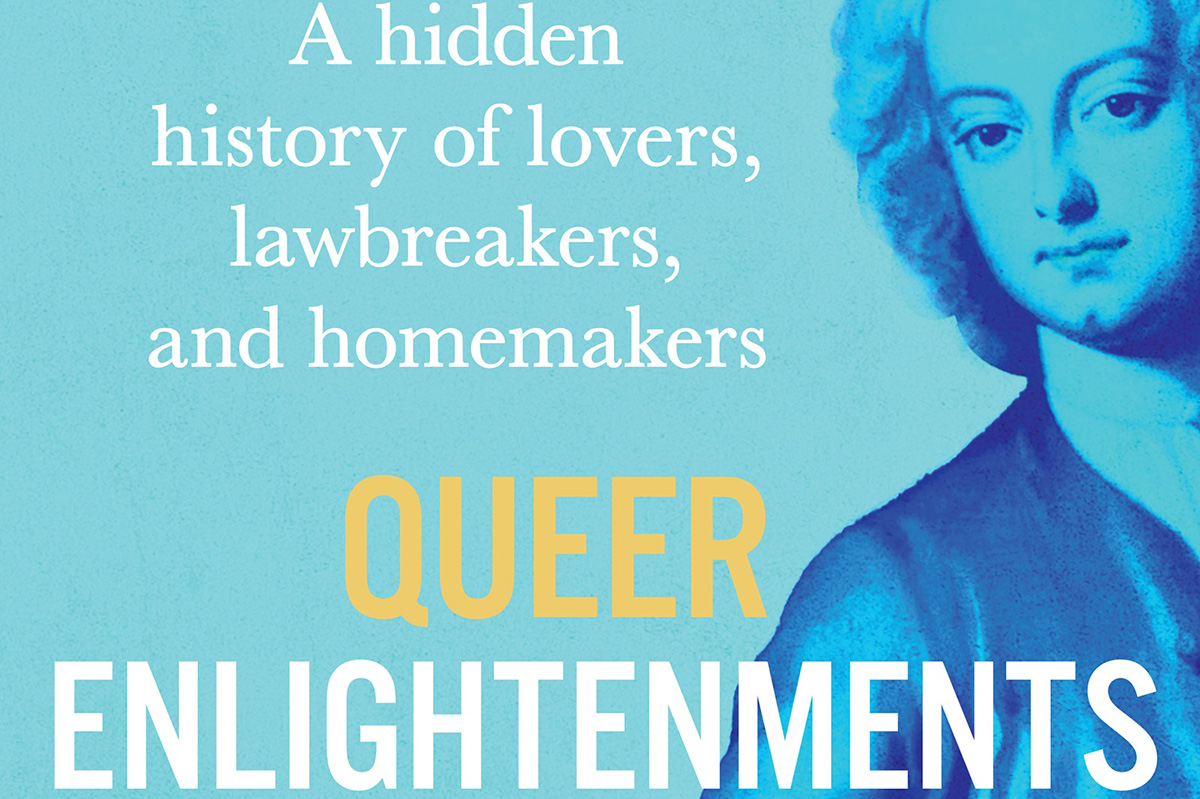
‘Queer Enlightenments: A Hidden History of Lovers, Lawbreakers, and Homemakers’
By Anthony Delaney
c.2025, Atlantic Monthly Press
$30/352 pages
It had to start somewhere.
The discrimination, the persecution, the inequality, it had a launching point. Can you put your finger on that date? Was it DADT, the 1950s scare, the Kinsey report? Certainly not Stonewall, or the Marriage Act, so where did it come from? In “Queer Enlightenments: A Hidden History of Lovers, Lawbreakers, and Homemakers” by Anthony Delaney, the story of queer oppression goes back so much farther.

The first recorded instance of the word “homosexual” arrived loudly in the spring of 1868: Hungarian journalist Károly Mária Kerthbeny wrote a letter to German activist Karl Heinrich Ulrichs referring to “same-sex-attracted men” with that new term. Many people believe that this was the “invention” of homosexuality, but Delaney begs to differ.
“Queer histories run much deeper than this…” he says.
Take, for instance, the delightfully named Mrs. Clap, who ran a “House” in London in which men often met other men for “marriage.” On a February night in 1726, Mrs. Clap’s House was raided and 40 men were taken to jail, where they were put in filthy, dank confines until the courts could get to them. One of the men was ultimately hanged for the crime of sodomy. Mrs. Clap was pilloried, and then disappeared from history.
William Pulteney had a duel with John, Lord Hervey, over insults flung at the latter man. The truth: Hervey was, in fact, openly a “sodomite.” He and his companion, Ste Fox had even set up a home together.
Adopting your lover was common in 18th century London, in order to make him a legal heir. In about 1769, rumors spread that the lovely female spy, the Chevalier d’Éon, was actually Charles d’Éon de Beaumont, a man who had been dressing in feminine attire for much longer than his espionage career. Anne Lister’s masculine demeanor often left her an “outcast.” And as George Wilson brought his bride to North American in 1821, he confessed to loving men, thus becoming North America’s first official “female husband.”
Sometimes, history can be quite dry. So can author Anthony Delaney’s wit. Together, though, they work well inside “Queer Enlightenments.”
Undoubtedly, you well know that inequality and persecution aren’t new things – which Delaney underscores here – and queer ancestors faced them head-on, just as people do today. The twist, in this often-chilling narrative, is that punishments levied on 18th- and 19th-century queer folk was harsher and Delaney doesn’t soften those accounts for readers. Read this book, and you’re platform-side at a hanging, in jail with an ally, at a duel with a complicated basis, embedded in a King’s court, and on a ship with a man whose new wife generously ignored his secret. Most of these tales are set in Great Britain and Europe, but North America features some, and Delaney wraps up thing nicely for today’s relevance.
While there’s some amusing side-eyeing in this book, “Queer Enlightenments” is a bit on the heavy side, so give yourself time with it. Pick it up, though, and you’ll love it til the end.
The Blade may receive commissions from qualifying purchases made via this post.
Books
A history of lesbian workarounds to build family
Fighting for the right to have and raise kids
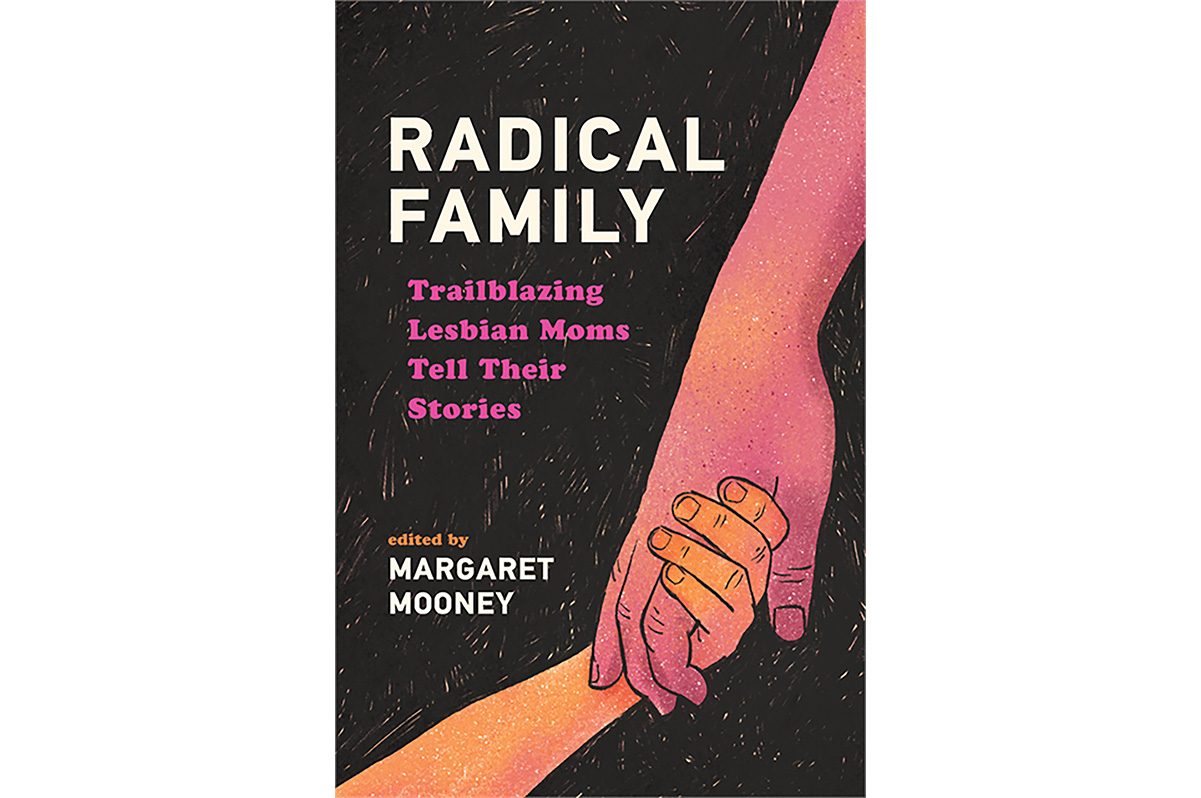
‘Radical Family: Trailblazing Lesbian Moms Tell Their Stories’
Edited by Margaret Mooney
c.2025, Wisconsin Historical Society Press
$20/150 pages
You don’t have a white picket fence with an adorable gate.
The other parts of the American Dream – the house in the suburbs, a minivan, and a big backyard – may also be beyond your reach. You’ve never wanted the joyous husband-wife union, but the two-point-five kids? Yeah, maybe that’s possible. As in the new book “Radical Family,” edited by Margaret Mooney, it’s surely more so than it was in the past.

Once upon a time, if a lesbian wanted to raise a family, she had two basic options: pregnancy or adoption. That is, says Mooney, if she was willing to buck a hetero-centric society that said the former was “selfish, unnatural and radical” and the latter was often just simply not possible or even legal.
Undaunted, and very much wanting kids, many lesbians ignored the rules. They built “chains” of women who handed off sperm from donor to doctor to potential mother. They demanded that fertility clinics allow single women as customers. They wrote pamphlets and publications aimed to help others become pregnant by themselves or with partners. They carefully sought lesbian-friendly obstetricians and nurses.
Over time, lesbians who wanted kids were “emboldened by the feminist movement and the gay and lesbian rights movement” and did what they had to do, omitted facts when needed, traveled abroad when they could, and found workarounds to build a family.
This book tells nine stories of everyday lesbians who succeeded.
Denise Matyka and Margaret McMurray went to Russia to adopt. Martha Dixon Popp and Alix Olson raised their family, in part and for awhile in conjunction with Popp’s husband. Gail Hirn learned from an agriculture publication how to inseminate herself. MC Reisdorf literally stood on her head to get pregnant. Mooney says that, like most lesbian parents then, she became a mother “without any safety nets…”
Such “struggles likely will feel familiar as you read about [the] desire to become parents…” says Mooney. “In short, these families are ordinary and extraordinary all at once.”
In her introduction, editor Margaret Mooney points out that the stories in this book generally take place in the latter part of the last century, but that their relevance is in the struggles that could happen tomorrow. There’s urgency in those words, absolutely, and they’re tinged with fear, but don’t let them keep you from “Radical Family.”
What you’ll see inside these nine tales is mostly happy, mostly triumphant – and mostly Wisconsin-centric, though the variety in dream-fulfillment is wide enough that the book is appropriate anywhere. The determination leaps out of the pages here, and the storytellers don’t hide their struggles, not with former partners, bureaucracy, or with roadblocks. Reading this book is like attending a conference and hearing attendees tell their tales. Bonus: photos and advice for any lesbian thinking of parenthood, single or partnered.
If you’re in search of positive stories from lesbian mothers and the wall-busting they did, or if you’ve lived the same tales, this slim book is a joy to read. For you, “Radical Family” may open some gates.
The Blade may receive commissions from qualifying purchases made via this post.
-

 The White House23 hours ago
The White House23 hours ago‘Lavender Scare 2.0’: inside the White House’s campaign against LGBTQ federal employees
-

 District of Columbia3 days ago
District of Columbia3 days agoHIV/AIDS activists block intersection near White House
-

 Movies4 days ago
Movies4 days agoHoliday movie season off to a ‘Wicked’ good start
-

 Commentary5 days ago
Commentary5 days agoPerfection is a lie and vulnerability is the new strength

